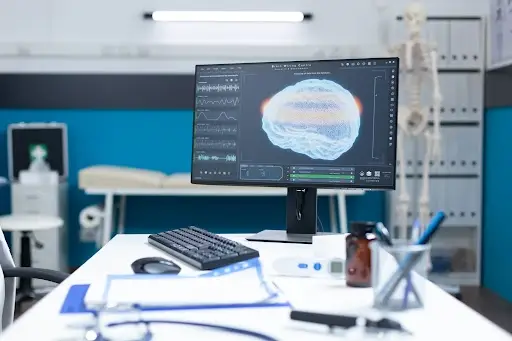Welcome to the MedsRole blog. Today, let’s explore this precious space of revenue cycle management; it’s the lifeblood of healthcare providers’ financial health. It makes not one whit of difference if you have it in house or outsourced to a third party; still, the seven steps of this cycle are key.
Healthcare Revenue Cycle Management: everything from scheduling the appointment to collecting payment. Smooth workflow ensures on-time and correct remittance of payments and keeps your practice afloat. Let’s go through the seven steps:
STEP 1. Patient Registration and Scheduling
- The journey begins by collecting accurate patient demographics and insurance information.
- Eligibility verification upfront precludes claim denial.
- Decreasing administrative burden and waiting times for patients.
STEP 2. Pre-Authorization
- Services will encompass pre-authorizations from the insurance company
- Streamlining minimizes waiting periods but also guarantees coverage of services
- Knowing all this, selecting the correct revenue cycle management outsourcing service can guarantee pre-authorizations happen almost overnight
STEP 3. Charge Capture and Coding
- Accurate charges are captured for services rendered with a view to correct billing.
- Medical coders attach correct codes based on physician documentation.
- Precise and standardized coding will ensure no rejection of claims and reappraisals so that maximum reimbursement is received.
STEP 4. Claims Submittal and Billing
- Clean claims are submitted electronically with proper patient information and also with accurate coding.
- Only then will you be able to accomplish this step if you collaborate with an RCM service provider?
- Unless you do this step, revenue flow in your medical practice is going to be bumpy and inconvenient.
STEP 5. Claim Reimbursement and Follow-up
- Insurance companies process the claims and determine payout or denial.
- Track the claims and ensure proper documentation is maintained if denial occurs.
- RCM can outsource the follow-up process and ensure timely reimbursement
STEP 6. Patient Payments and Collections
- The patients may have liabilities such as copays, deductibles, or services left uncovered.
- The notorious billing statements will ensure that the patient fully understands the same thing and it boosts up the rate of collections.
- Follow-ups of outstanding balances could be included by automated payment reminders.
STEP 7. Payment Posting and Reconciliation
- All payments received, insurance, or patients will be posted correctly.
- Accounting reconciliation will ascertain that all remittances are collected and financial books will be correct.
By following these seven stages, one may identify areas in the revenue cycle as bottlenecks and is thus better positioned to maximize cash flow and improve the financial foundation of practice.
Why you need to outsource your RCM
Get yourself a good outsourced partner who can help streamline the processes so that payments are collected accurately and with minimal errors. A good partner in a solid RCM will allow you to care well for your patients and secure your financial future.
Let MedsRole Improve Your RCM today!
You will get a partner who will reduce your financial inefficiency since the software will streamline processes while revenue cycle management in the medical billing field is refined with us. We are committed to open communication, compliance, and continuous improvement.
Improve your healthcare finances by managing the revenue cycle of your healthcare organization with MedsRole–the place where experience meets quality. Time to watch out for more informative blogs from our side.








